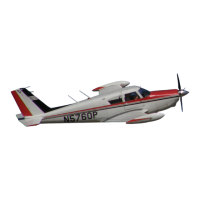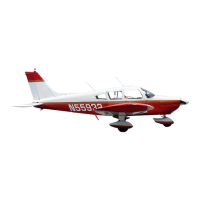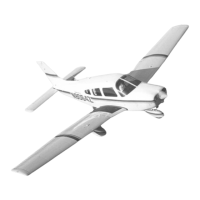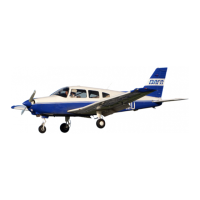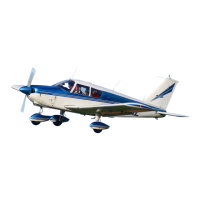Alrcran
Publications
Pipcr
Comanchc
?jll
(Early
Modcl)
The exhaust system incorporates a stainless-steel muffler that is fitted with a heater shroud to
provide heat for the cabin and the carburetor-heat system.
The constant-speed, controllable-pitch propeller is alloy forged and controlled by a governor
mounted on the engine that supplies oil to the propeller at various pressures through the engine
crankshaft.
ENGINE CONTROLS
Engine controls consist of a throttle control, a mixture control, and a propeller rpm control which
are located on the lower center of the instrument panel where they are accessible to both the pilot
and copilot.
The carburetor heat control is located to the right of the engine controls. When the control is in
the full-forward, or closed position, the engine is operated on filtered air. When the control is
placed in the aft, or open position, unfiltered heated air is directed into the carburetor.
FLIGHT CONTROLS
The primary flight controls of the
PA-24
are of conventional design consisting of a control wheel
that operates the ailerons and stabilator, and pedals that operate the rudder. DupIicate controls are
provided for the copilot.
The stabilator trim is operated by an overhead crank in the cabin and controlled by a rotating drum
in the tail section. The rudder trim is operated by a knob mounted below the right center of the
instrument panel that controls a
bungee mechanism that extends forward to the nose gear steering
arm.
Installed on the early model Comanche
250
are manually operated plain flaps which can be
lowered to any of three positions of
9,
18
or
27
degrees. The flap control lever is located below
the right center of the instrument panel.
A
locking mechanism holds the flap on the right side
when it is in the up position so that it may be used as a step while entering or exiting the aircraft.
LANDING GEAR
The Comanche tricycle landing-gear system is a fully retractable air-oil, oleo-strut type, and is
electrically operated by a selector switch located on the instrument panel. The three landing gear
are mechanically connected, and move as a unit.
The nose gear is steerable with the rudder pedals through a forty-degree arc. The steering
mechanism is disconnected automatically during gear retraction to reduce rudder pedal loads in
flight. The nose wheel is equipped with a hydraulic shimmy damper.
Copyright:
1993
Page
7-3
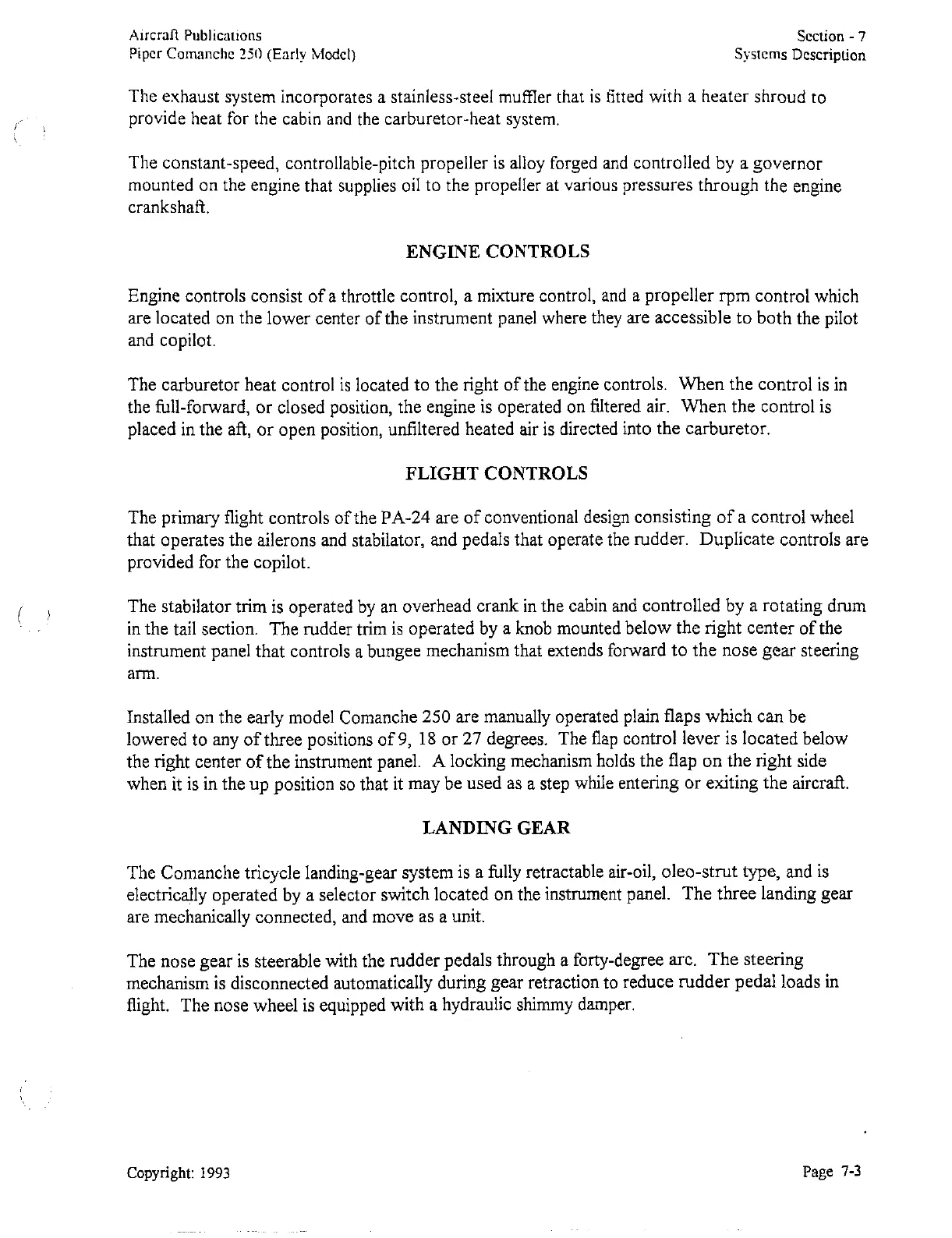